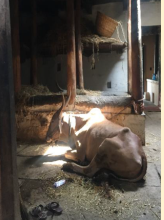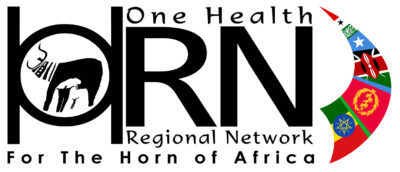 Faeces are major sources of virulent and antimicrobial resistant pathogens to the environment and life on earth (Graaf et al., 2018 and Hassel et al., 2019). The way in which animal and human faeces are managed are important determinants of pathogen transmission from animals, to the environment, and humans (Hutchison et al., 2005). The use of improved sanitation facilities can help to prevent diseases that are transmitted through faeces.
Faeces are major sources of virulent and antimicrobial resistant pathogens to the environment and life on earth (Graaf et al., 2018 and Hassel et al., 2019). The way in which animal and human faeces are managed are important determinants of pathogen transmission from animals, to the environment, and humans (Hutchison et al., 2005). The use of improved sanitation facilities can help to prevent diseases that are transmitted through faeces.
Globally, in 2010, 2.5 billion people were still living without improved sanitation and 15% of the population still practice open defecation. In sub-Saharan Africa, in 2010, 45% of the population uses either shared or unimproved facilities, and 25% practice open defecation. Unless the speed of movement of change in the sanitation sector is accelerated, the Sustainable Development Goal (SDGs) sanitation target may not be achieved until 2026 (WHO, UNICEF, 2013).
Efforts to end open defecation and provide universal access to safe drinking water, sanitation, and
hygiene by 2030 are being enacted through the SDGs (Prendergast et al.,
2019). However, current achievements, particularly in developing countries such as Ethiopia, are
low. Poor management of animal faeces and poor understanding of zoonotic pathogen from manure
are very common problems in Ethiopia. The Government is giving due attention only to biosolid
(human faeces) and sewage, however it is arguably neglecting the important public health risks from
animal faeces. Hence, policy makers remain largely unaware of the extent of the problem due to
improper management of animal waste.
This project will take a One Health approach and determine the challenges for not properly
managing both human and animals faeces, and recommend potential solutions that could contribute
for success of the SDGs agenda in good health and wellbeing (SDG3) and clean water and sanitation
(SDG 6). The final aim is to inform WASH type interventions to reduce human exposure to zoonotic
bacterial threat associated with human and animal faeces using a One Health approach.
To combat health threats due to faecal borne pathogens, WHO introduced the water, sanitation, and
hygiene (WaSH) programme. Ethiopian government introduced a health extension programme and
a community-led total sanitation and hygiene programme. However, low success has been
observed, associated to under-recognition of exposure to animals and their faeces in WASH and
challenges for implementation of proper waste management. We aim to identify how human and
animal faeces are managed; identify socio-economic, knowledge, attitude and practice related determinants of human and animal faeces management; determine faecal load of bacteria from different human, animal and environment exposure sources, and isolate non-typhoidal salmonella.
In general our Objectives are:
- Identify how human and animal faeces are managed in the three HDSS sites
- Identify socio–economic, knowledge, attitude and practice related determinants of human and
animal faeces management - Determine faecal load of bacteria on hand of females/mothers, living area and manure pile
- Isolation of non-typhoidal salmonella spp from the different samples

